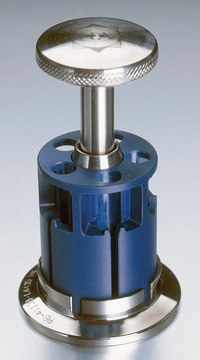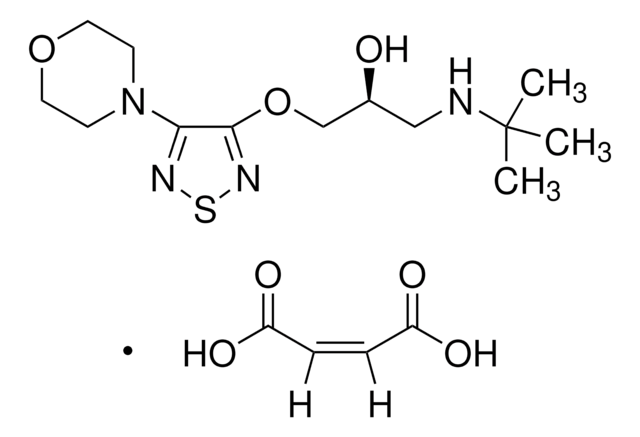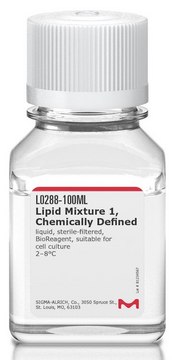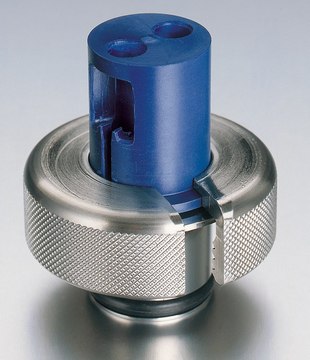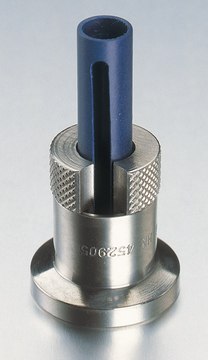ABT80
Anti-Girdin, coiled-coil region Antibody
from rabbit, purified by affinity chromatography
Sign Into View Organizational & Contract Pricing
All Photos(2)
UNSPSC Code:
12352203
eCl@ss:
32160702
NACRES:
NA.41
Recommended Products
biological source
rabbit
Quality Level
antibody form
affinity isolated antibody
antibody product type
primary antibodies
clone
polyclonal
purified by
affinity chromatography
species reactivity
monkey, human
species reactivity (predicted by homology)
rat
technique(s)
immunocytochemistry: suitable
immunoprecipitation (IP): suitable
western blot: suitable
NCBI accession no.
shipped in
wet ice
target post-translational modification
unmodified
Gene Information
human ... CCDC88A(55704)
General description
Girdin (Ccdc88a; APE, GIV, or HkRP1) is a ubiquitous protein belonging to the CCDC88 family. Girdin is an actin-binding protein which interacts with actin via its C-terminal domain, and may play a crucial role in cell motility and cytoskeleton remodeling. These effects may be regulated by a reciprocal relationship between Girdin and Akt. Akt phosphorylates Girdin, and Girdin binds to Akt and enhances phosphorylation of Akt, thereby promoting phosphorylation of Akt’s downstream targets such as GSK-3β and FOXO1A. Girdin/Akt signaling may play an important role in cancer by facilitating the proliferation of cancer cells.
Specificity
Other Homologies: Mouse (97% sequence homology).
Immunogen
GST-tagged recombinant protein corresponding to the coiled coil domain of rat Girdin.
Application
Immunocytochemistry Analysis: A 1:1000 dilution from a representative lot detected Girdin in Cos-7 cells (Prof. P. Ghosh, Department of Medicine, Division of Gastroenterology and Hepatology, UCSD School of Medicine and Veterans Affairs Medical Center).
Western Blot Analysis: A representative lot detected Girdin in Cos-7 cell lysate. Uncharacterized bands may be observed in some cell lysates.
Immunoprecipitation Analysis: A representative lot immunoprecipitated Girdin in HeLa cell lysates (Prof. P. Ghosh, Department of Medicine, Division of Gastroenterology and Hepatology, UCSD School of Medicine and Veterans Affairs Medical Center). Uncharacterized bands may be observed in some cell lysates.
Western Blot Analysis: A representative lot detected Girdin in Cos-7 cell lysate. Uncharacterized bands may be observed in some cell lysates.
Immunoprecipitation Analysis: A representative lot immunoprecipitated Girdin in HeLa cell lysates (Prof. P. Ghosh, Department of Medicine, Division of Gastroenterology and Hepatology, UCSD School of Medicine and Veterans Affairs Medical Center). Uncharacterized bands may be observed in some cell lysates.
Research Category
Cell Structure
Cell Structure
Research Sub Category
Cytoskeletal Signaling
Cytoskeletal Signaling
This Anti-Girdin, coiled-coil region Antibody is validated for use in ICC, Western Blotting, Immunoprecipitation for the detection of Girdin, coiled-coil region.
Quality
Immunocytochemistry Analysis: A 1:1000 dilution of this antibody detected Girdin in HeLa cells (Prof. A. Ghosh, Division of Biology, UCSD).
Target description
~250 kDa observed. Some uncharacterized bands may be observed in some cell lysates.
Physical form
Affinity purified
Purified rabbit polyclonal in buffer containing 0.1 M Tris-Glycine (pH 7.4), 150 mM NaCl with 0.05% sodium azide.
Storage and Stability
Stable for 1 year at 2-8°C from date of receipt.
Analysis Note
Control
HeLa cells
HeLa cells
Other Notes
Concentration: Please refer to the Certificate of Analysis for the lot-specific concentration.
Disclaimer
Unless otherwise stated in our catalog or other company documentation accompanying the product(s), our products are intended for research use only and are not to be used for any other purpose, which includes but is not limited to, unauthorized commercial uses, in vitro diagnostic uses, ex vivo or in vivo therapeutic uses or any type of consumption or application to humans or animals.
WGK
WGK 1
Flash Point(F)
Not applicable
Flash Point(C)
Not applicable
Certificates of Analysis (COA)
Search for Certificates of Analysis (COA) by entering the products Lot/Batch Number. Lot and Batch Numbers can be found on a product’s label following the words ‘Lot’ or ‘Batch’.
Already Own This Product?
Find documentation for the products that you have recently purchased in the Document Library.
STAT3 protein up-regulates G?-interacting vesicle-associated protein (GIV)/Girdin expression, and GIV enhances STAT3 activation in a positive feedback loop during wound healing and tumor invasion/metastasis.
Dunkel, Y; Ong, A; Notani, D; Mittal, Y; Lam, M; Mi, X; Ghosh, P
The Journal of Biological Chemistry null
Cornélia Biehler et al.
PLoS genetics, 16(3), e1008674-e1008674 (2020-03-21)
Epithelial cell polarity defects support cancer progression. It is thus crucial to decipher the functional interactions within the polarity protein network. Here we show that Drosophila Girdin and its human ortholog (GIRDIN) sustain the function of crucial lateral polarity proteins
Pradipta Ghosh et al.
Life science alliance, 3(3) (2020-02-12)
The gut barrier separates trillions of microbes from the largest immune system in the body; when compromised, a "leaky" gut barrier fuels systemic inflammation, which hastens the progression of chronic diseases. Strategies to detect and repair the leaky gut barrier
Lingxia Qiao et al.
Molecular systems biology, 19(4), e11127-e11127 (2023-03-02)
Cancers represent complex autonomous systems, displaying self-sufficiency in growth signaling. Autonomous growth is fueled by a cancer cell's ability to "secrete-and-sense" growth factors (GFs): a poorly understood phenomenon. Using an integrated computational and experimental approach, here we dissect the impact
Sequoyah Reynoso et al.
eLife, 10 (2021-08-20)
For a sperm to successfully fertilize an egg, it must first undergo capacitation in the female reproductive tract and later undergo acrosomal reaction (AR) upon encountering an egg surrounded by its vestment. How premature AR is avoided despite rapid surges
Our team of scientists has experience in all areas of research including Life Science, Material Science, Chemical Synthesis, Chromatography, Analytical and many others.
Contact Technical Service